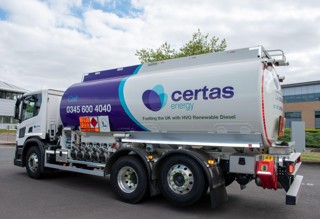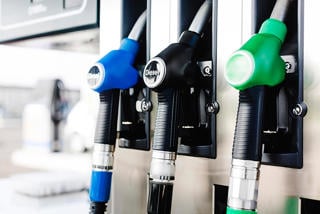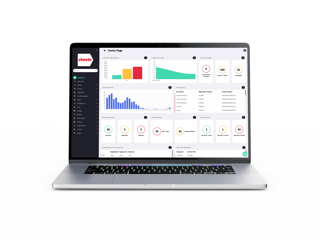Supermarket price wars, the strength of sterling and recent falls in the wholesale cost of oil are among the main reasons why petrol and diesel prices have dropped to their lowest levels for more than two and a half years.
However, some experts believe prices are set to rise, due to a combination of increased global demand for oil over winter and ongoing political uncertainty in the Middle East.
In addition, a £2.40 rise in crude oil prices in the past couple of weeks could add 2p to pump prices in the coming weeks.
According to the AA, the average cost of diesel in the UK fell from 142.5 pence per litre (ppl) in mid-September to 139.12ppl in mid-October, its lowest since March 2011, when diesel retailed at 139ppl.
The average cost of a litre of unleaded petrol fell from 137.64ppl to 132.16ppl over the same period, its lowest price since February 2011, when the average price was 128.8ppl.
Although the AA has yet to release its official November figures – collated by research firm Experian Catalyst – according to the price sharing website whatgas.com, these average prices have dropped further still.
The average cost of unleaded petrol in the UK was 129.73ppl on November 20, while the average price of diesel was 137.1ppl.
Mike Waters, head of insight and consultancy at vehicle leasing and fleet management company Arval, said: “Some of the recent falls in forecourt prices can be attributed to the relatively strong value of sterling – it’s currently around $1.61 to the pound up from $1.5 a couple of months ago. When the pound is strong, then you should see something filter through at the pumps.
“Over the past few weeks, the supermarkets have been the quickest to respond to any opportunity to reduce their price – and this tends to lead the market.”
Prices are affected by movements in the dollar to pound exchange rate because crude oil and refined petrol are both priced in dollars.
The wholesale price also fell 4p in the middle of last month, which has been working its way through the pricing system.
At the end of October, supermarket chain Asda announced that it had capped prices nationally and said drivers filling up at its forecourts would pay no more than 126.7ppl for petrol and 133.7ppl for diesel.
Tesco and Morrisons reacted quickly to make reductions while Sainsbury’s cut prices by 3p.
AA public affairs spokesman Luke Bosdet said the wholesale price was now starting to rise – which means the prices of petrol and diesel are likely to go up in the coming weeks.
“If you look at what’s happened over the past couple of years, the market loves to bottom out at around 132ppl for petrol and at the moment, it’s a shade above 130p.
“Based simply on what’s happened in previous years, there’s a likelihood that the price will go back up slightly.”
Pricing forecasts on fuels are notoriously fickle. Only in July, experts were preducting that diesel prices would soar by up to 5p per litre, taking average prices to 145ppl due to currency fluctuations and a surge in wholesale prices.
Although prices did rise slightly, peaking at around 142ppl, they quickly dropped back over the next couple of months.
“The price of diesel is vulnerable to the cost of imports because we don’t process as much of it as we do petrol and consequently we can be hostage to those producing nations if they don’t decide to release their stock,” Bosdet said.
“There remains the potential for this to pump up the price of diesel and there lies a stark lesson about what could happen if refineries in this country are shut.”
He added that increasing unrest and instability in the oil-producing nations of the Middle East – including Libya, Egypt and Iran – as well as concerns over the financial stimulus package in the US, were also likely to result in the price of oil increasing in coming weeks.
Find out the price of fuel near you with our online regional prices and forecourt locator tools.




















Login to comment
Comments
No comments have been made yet.